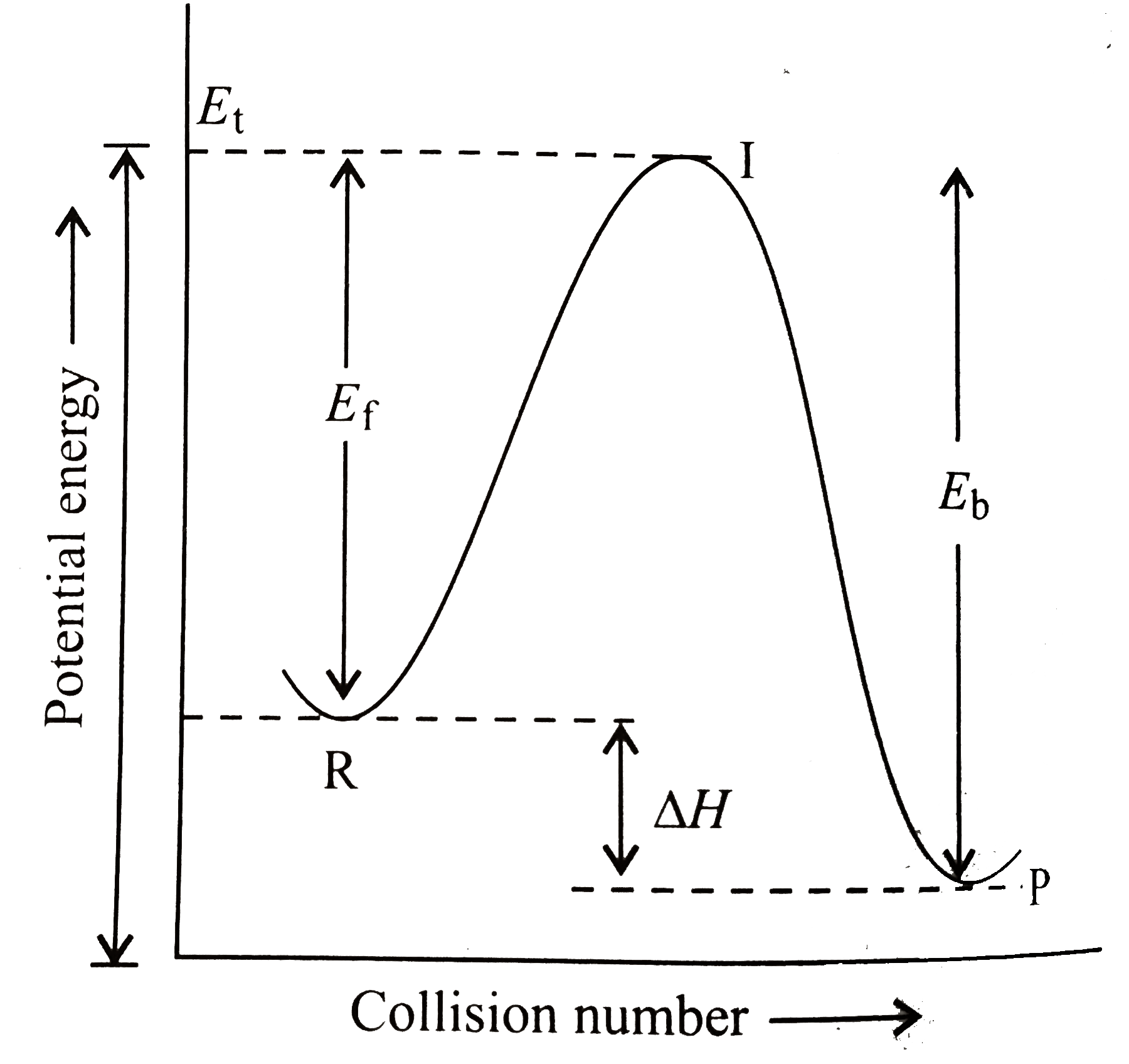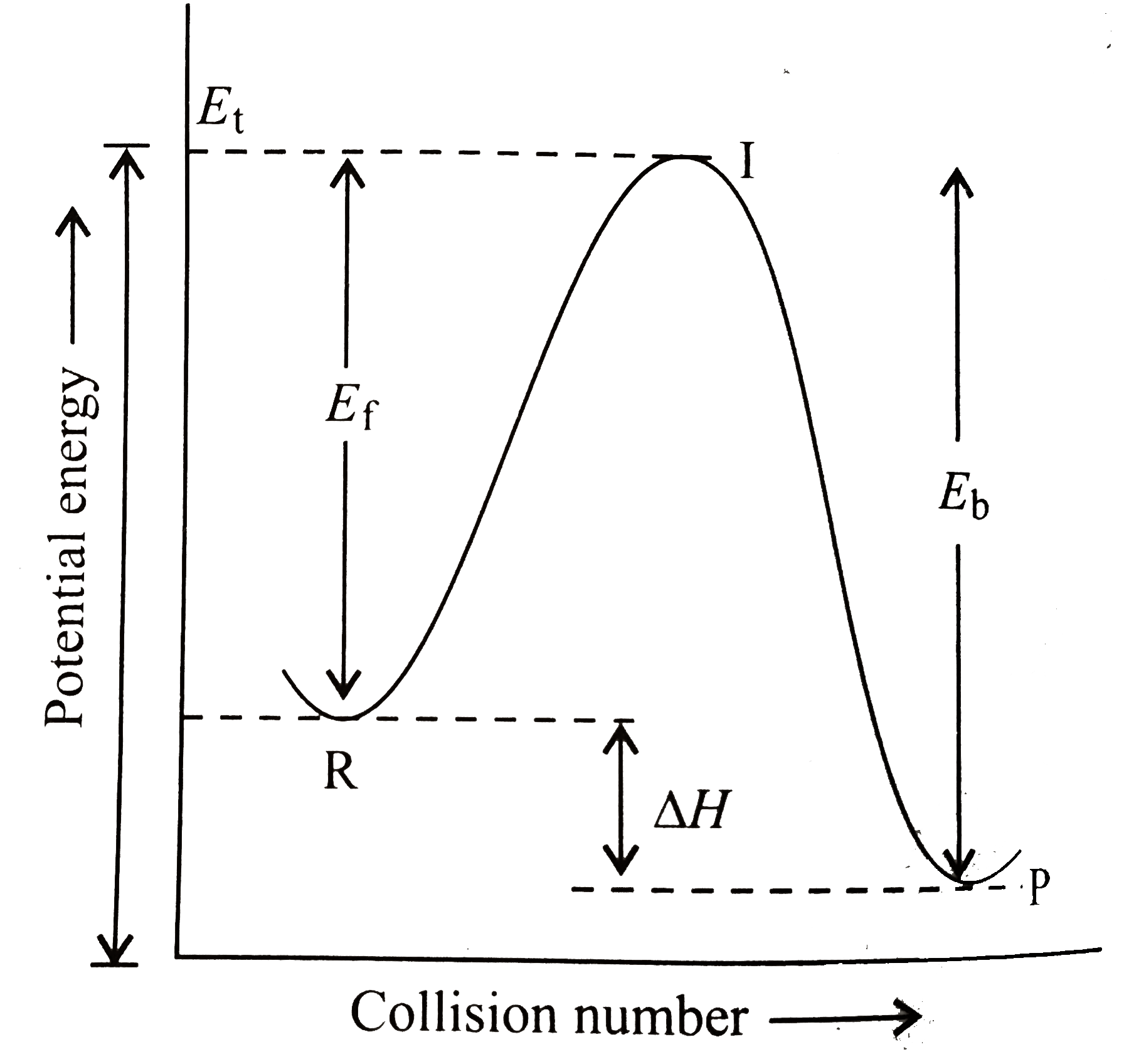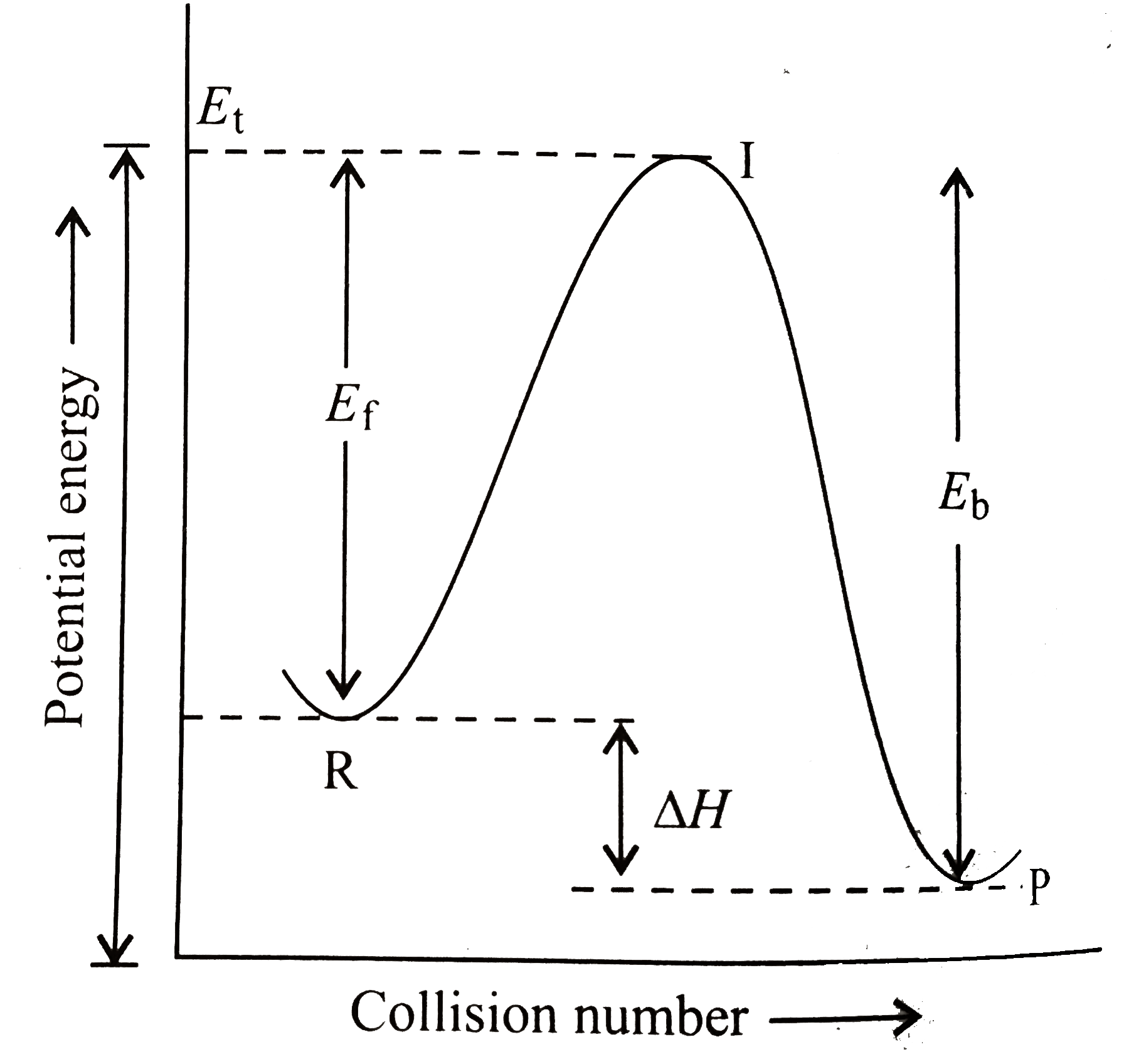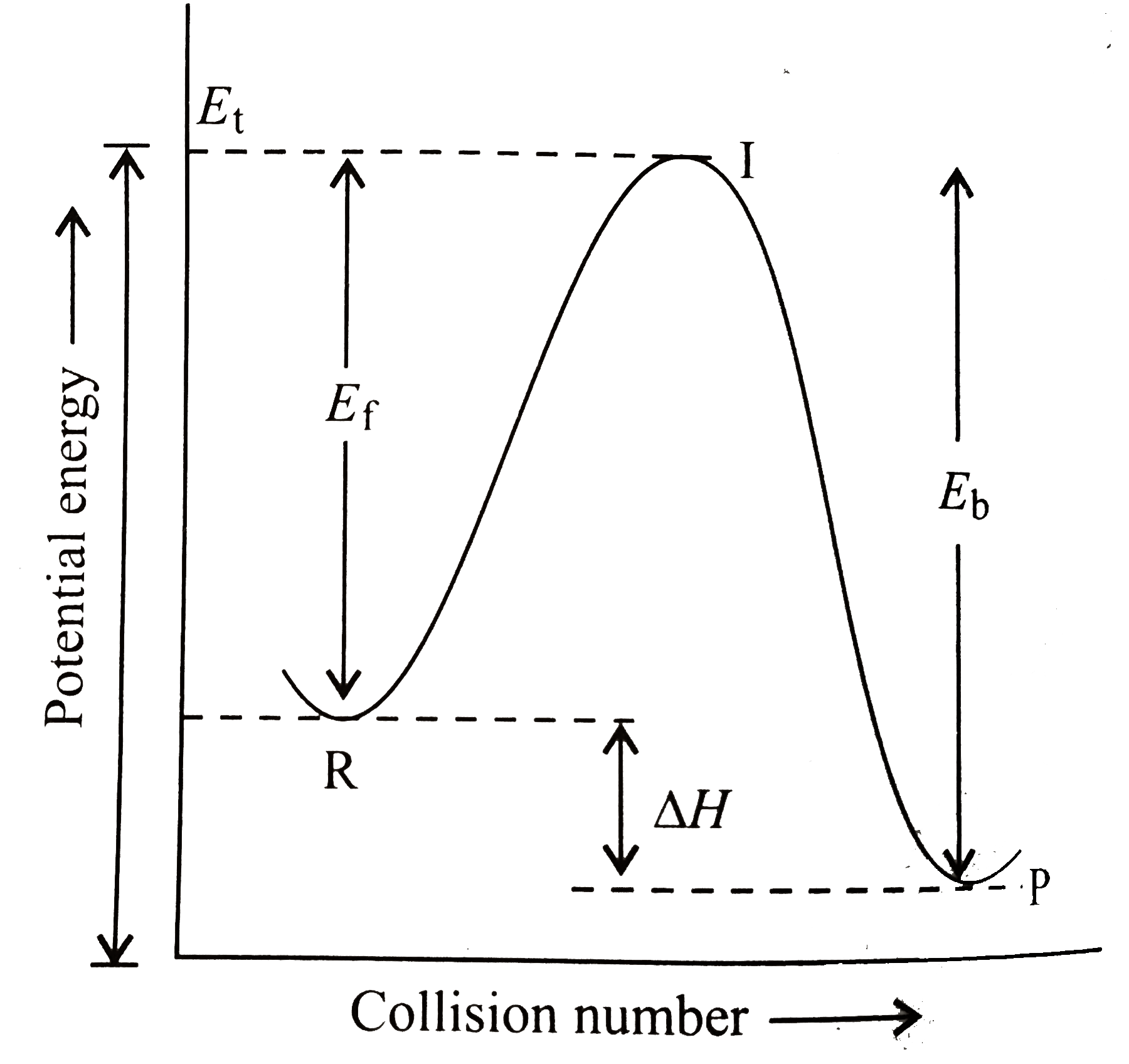Which plots will give the value of activation energy?
kvsT
1/kvsT
lnkvs1T
CvsT
The correct Answer is:C
According to Arrhenius equation
lnk=lnA−EaRT
Plot of ln k vs 1T gives a slope =−EaR
From where Ea can be calculate.
Topper's Solved these Questions
- BOOK - DINESH PUBLICATIONCHAPTER - RATES OF REACTIONS AND CHEMICAL KINETICSEXERCISE - Revision Question168videos
RATES OF REACTIONS AND CHEMICAL KINETICS
- BOOK - DINESH PUBLICATIONCHAPTER - RATES OF REACTIONS AND CHEMICAL KINETICSEXERCISE - Selected Straight49videos
RATES OF REACTIONS AND CHEMICAL KINETICS
- BOOK - DINESH PUBLICATIONCHAPTER - PHYSICAL AND CHEMICAL EQUILIBRIAEXERCISE - ULTIMATE PREPARATORY PACKAGE13videos
PHYSICAL AND CHEMICAL EQUILIBRIA
- BOOK - DINESH PUBLICATIONCHAPTER - REDOX REACTIONSEXERCISE - Reasoning Type Questions4videos
REDOX REACTIONS
Similar Questions
A first order reaction has very high value of activation energy.
View SolutionA colliison between reactant molecules must occur with a certain minimum energy before it is effective in yielding Product molecules. This minimum energy is called activation energy Ea Large the value of activation energy, smaller the value of rate constant k. Larger is the value of activation energy, greater is the effect of temperature rise on rate constant k.

Ef= Activation energy of forward reaction
Eb= Activation energy of backward reaction
ΔH=Ef−Eb
Ef= threshold energy
The rate constant of a certain reaction is given by k=Ae−Ea/RT
(where A= Arrhenius constant). Which factor should be lowered so that the rate of reaction may increase?View Solution
Knowledge Check
- Question 1 - Select One
Activation energy is
AThreshold energy + Average kinetic energyBThreshold energy - Average internal energyCThreshold energy + Potential energyDThreshold energy + Average kinetic energy - Question 2 - Select One
Activation energy is:
AThe amount of energy to be added to the actual energy of a molecule so that the threshold energy is reachedBThe amount of energy the molecule must contains so that it reactsCThe energy which a molecule should have in order to enter into an effective collisionDThe average kinetic energy of the molecule - Question 3 - Select One
Activation energy is:
AThe amount of energy to be added to the actual energy of a molecule so that the threshold energy is reachedBThe amount of energy the molecule must contain so that it reactsCThe energy which a molecule should have in order to enter into an effective collisionDThe average kinetic energy of the molecule
A colliison between reactant molecules must occur with a certain minimum energy before it is effective in yielding Product molecules. This minimum energy is called activation energy Ea Large the value of activation energy, smaller the value of rate constant k. Larger is the value of activation energy, greater is the effect of temperature rise on rate constant k.

Ef= Activation energy of forward reaction
Eb= Activation energy of backward reaction
ΔH=Ef−Eb
Ef= threshold energy
The activation eneries for forward and backward reactions in a chemical reaction are 30.5 and 45.4kJmol−1 respectively. The reaction isView SolutionA colliison between reactant molecules must occur with a certain minimum energy before it is effective in yielding Product molecules. This minimum energy is called activation energy Ea Large the value of activation energy, smaller the value of rate constant k. Larger is the value of activation energy, greater is the effect of temperature rise on rate constant k.

Ef= Activation energy of forward reaction
Eb= Activation energy of backward reaction
ΔH=Ef−Eb
Ef= threshold energy
In a hypothetical reaction A→B, the activation energies for the forward and backward reactions are 15 and 9kJmol−1, respectively. The potential energy of A is 10kJmol−1. Which of the following is wrong?View SolutionA colliison between reactant molecules must occur with a certain minimum energy before it is effective in yielding Product molecules. This minimum energy is called activation energy Ea Large the value of activation energy, smaller the value of rate constant k. Larger is the value of activation energy, greater is the effect of temperature rise on rate constant k.

Ef= Activation energy of forward reaction
Eb= Activation energy of backward reaction
ΔH=Ef−Eb
Ef= threshold energy
If a reaction A+B→C is exothermic to the extent 30kJmol−1 and the forward reaction has an activation energy of 249kJmol−1 the activation energy for reverse reaction in kJmol−1 isView SolutionWhich straight line gives the activation energy for a reaction?
View SolutionThe energy of activation is:
View Solution

